Goa is famous for its white sand beaches, tourist-friendly culture and party atmosphere. We found all of this, but also found great historical neighbourhoods with old buildings from its days as a Portuguese trading centre.
Palolem, in south Goa, was more like a beach town in Sri Lanka than in India. The large cove is lined with sand, and though not the finest sand, the beach was quite clean. The waves are gentle which makes it a great area for swimming and kayaking. The other part that makes this an unusual Indian site are the restaurants and bars that line the beach and offer sunbeds and umbrellas. In the evening, the restaurants set up romantic candle-lit dining on the beach. We haven’t seen anything like this anywhere else in India. The beach town has many great hotels, restaurants and even tolerate women wearing shorts! They are ready for western beach-going tourists. It certainly didn’t feel like India but was a lovely spot to relax for a few days.

Fishing boats, Palolem Beach, Goa 
Fishing boats, Palolem Beach, Goa 
Picking barnacles, Palolem Beach, Goa 
Picking barnacles, Palolem Beach, Goa 
Palolem Beach,Goa 
Palolem Beach, Goa 
Palolem Beach, Goa 
Baywatch with the rescue boats behind in Palolem Beach,Goa 
Bay Watch in Palolem Beach, Goa 
Paddler in the Sunset, Palolem Beach, Goa 
Sunset, Palolem Beach, Goa 
Candle-lit dinning tables, Palolem Beach, Goa
At one end of the beach the shore is very rocky with large boulders forming smaller coves and a cape. On the end of the cape, a coconut grove on a small hill gave us great views of the beach and the rocky shore on the other side. At the other end of the beach, a small estuary cuts off one section of the rugged shore. Many fishing boats were just left there until the water level rose. There’s a rickety bridge to get to the other side when the tide comes in, luckily it was low when we were there so we could hop over the small stream.

Coconut Grove near Palolem Beach,Goa 
Rocky coast near Palolem Beach, Goa 
Rocky coast near Palolem Beach, Goa 
Rocky coast near Palolem Beach, Goa 
Rocky coast near Palolem Beach, Goa 
Coconut grove,Palolem Beach, Goa 
Fishing boat in dry estuary, Palolem Beach, Goa 
Rickety Bridge, Palolem Beach, Goa
We went kayaking one morning to see the coast line. Since we were there at the end of dry season, the area was quite brown, but it is still a lovely coast with rocky cliffs and small coves with secret beaches. It’s supposed to be one of the best spots to see dolphins, but they were shy on the day we were there because we didn’t see any.

Coast near Palolem Beach, Goa 
Coast near Palolem Beach, Goa 
Coast near Palolem Beach, Goa 
Hidden beach near Palolem Beach, Goa
Further north, the capital Panaji is a lovely old city established by the Portuguese. Its architecture and culture have a strong Portuguese influence of which the Goan natives are proud. The neighbourhoods have narrow streets, with renovated small buildings that are now homes, shops, restaurants and hotels. There’s a really nice feel to the town and a laid-back attitude which is unusual for a state capital.

Portuguese architecture, Panaji, Goa 
Portuguese architecture, Panaji, Goa 
Portuguese architecture, Panaji, Goa 
Our Guest House, Panaji, Goa 
Our Guest House, Panaji, Goa 
Shri Mahalaxmi Sanshtan Temple, Panaji, Goa 
St Sebastian’s Chapel, Panaji, Goa 
Portuguese architecture,, Panaji, Goa 
Portuguese architecture,, Panaji, Goa
There are a few hills in town that add character to the different building designs including Maruti Temple and Our Lady of Immaculate Conception church. We enjoyed wandering the streets, admiring the old buildings.
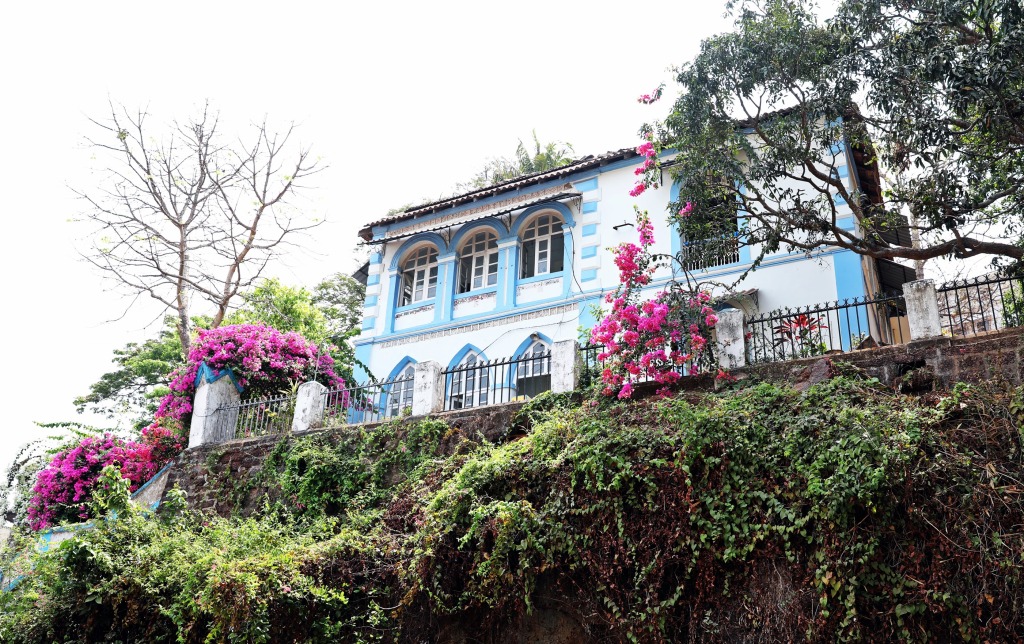
Portuguese architecture, Panaji, Goa 
Panaji, Goa 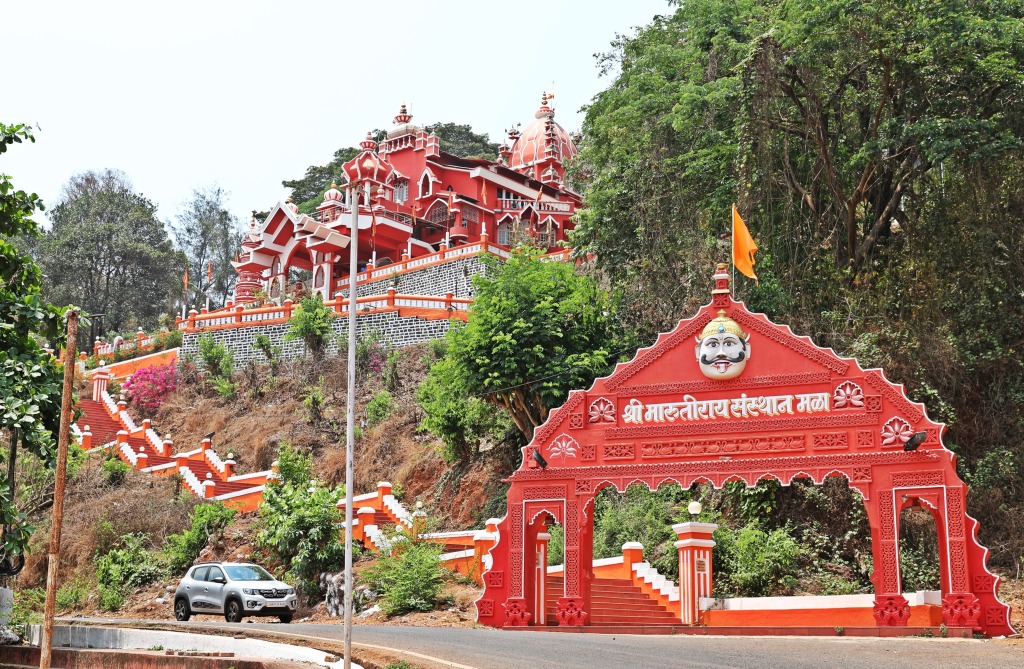
Maruti Temple, Panaji, Goa 
Maruti Temple, Panaji, Goa 
Portuguese architecture, Panaji, Goa 
Church of Our Lady of Immaculate Conception, Panaji, Goa
A few kilometers away, Old Goa was the first settlement in this area. It was abandoned when a plague killed many of the citizens and the city was moved to Panaji. From the 16th -18th centuries, Old Goa was at its peak and was larger than London. All that is left of Old Goa today are churches, and there are plenty. Basilica of Bom Jesus (Baby Jesus) is a 16th century large brick church that has a rather plain baroque-style exterior, but the interior is another story. It has a large, ornate golden alter that takes up the entire front wall of the church. To its side is a grand mausoleum for St. Francis Xavier, the first missionary to India.
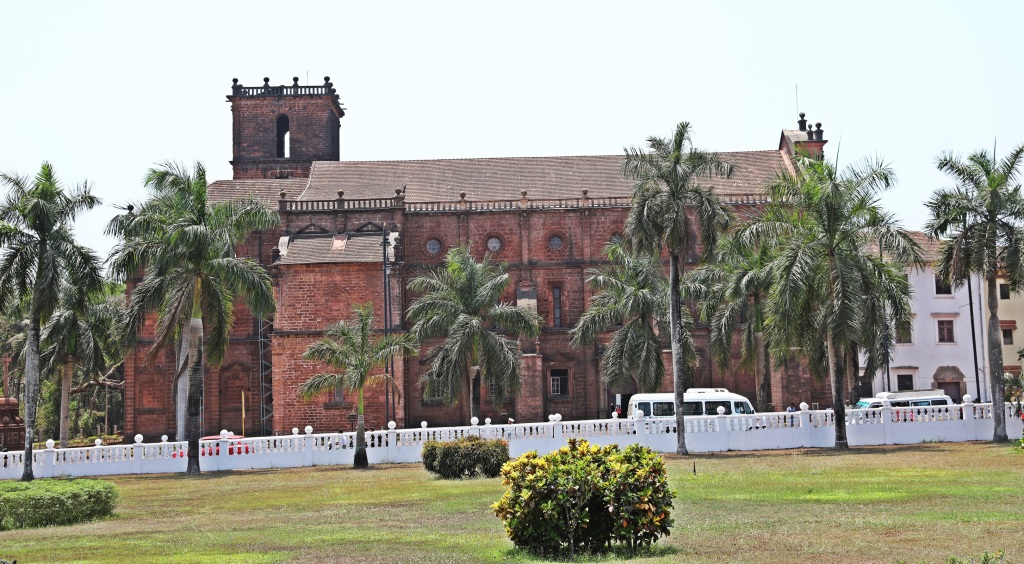
Basilica of Bom Jesus, Old Goa 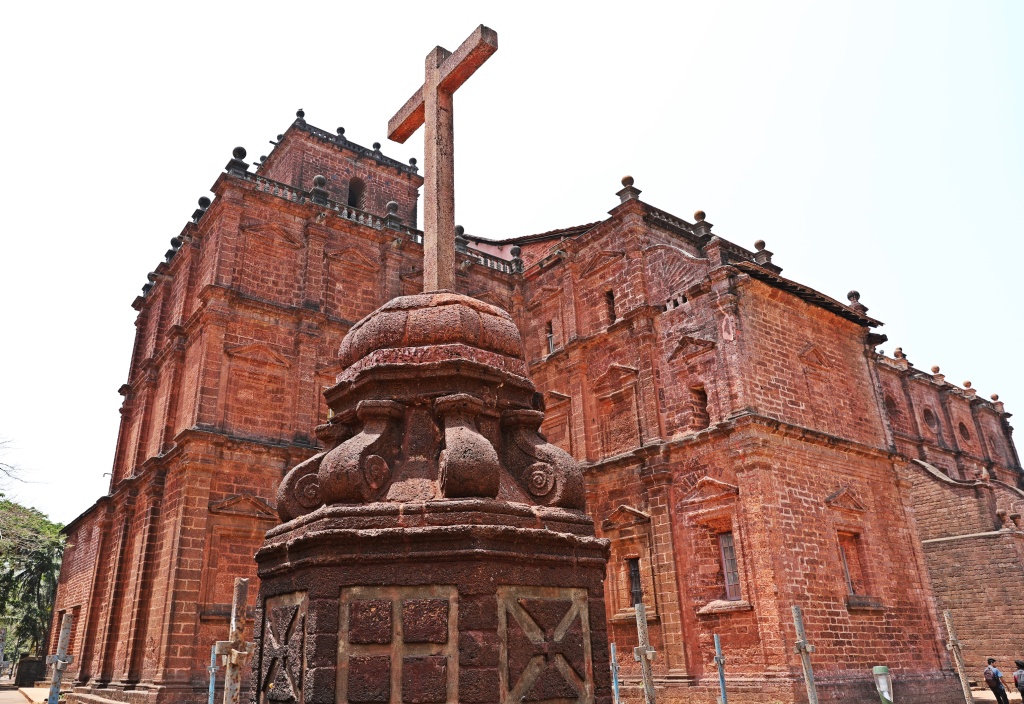
Basilica of Bom Jesus, Old Goa 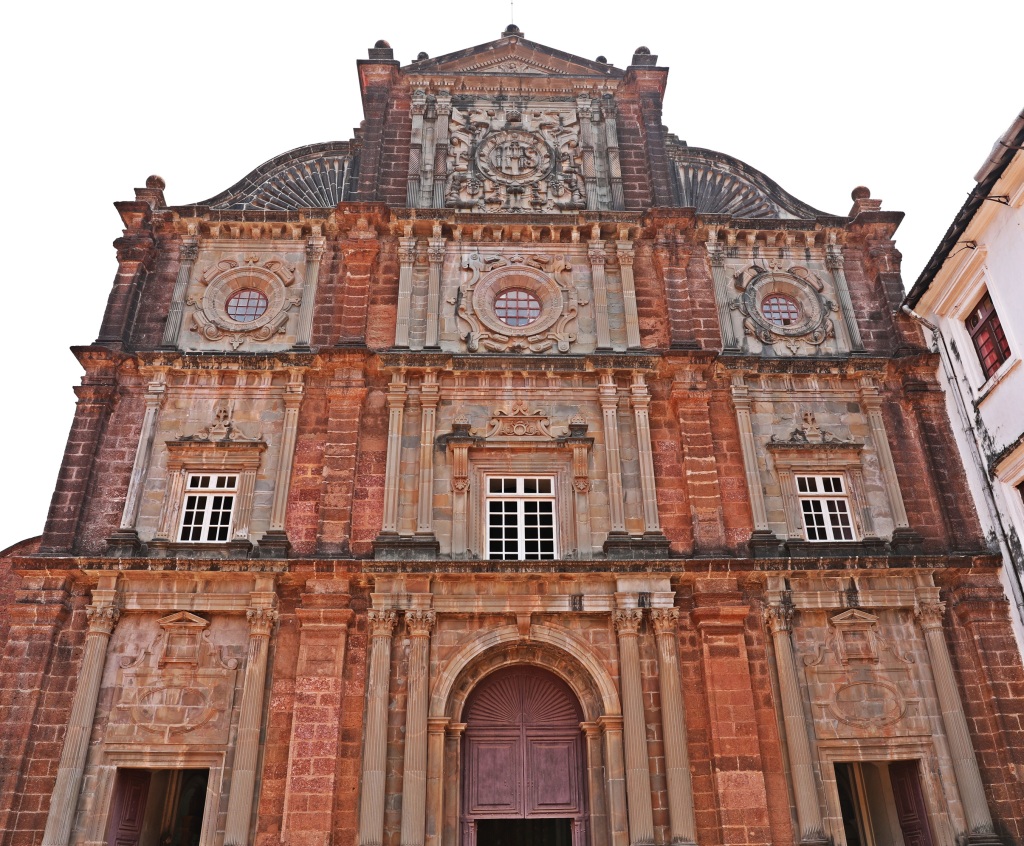
Basilica of Bom Jesus, Old Goa 
Alter Basilica of Bom Jesus, Old Goa 
Mausoleum of St. Francis Xavier, Basilica of Bom Jesus, Old Goa 
Basilica of Bom Jesus, Old Goa
Across the street, the large Sé Cathedral is the largest church in Asia. It was built in the Tuscan style with a large, yet simple, white front. Behind it is the Church of St. Francis of Assisi with beautifully carved wood paneling in a long nave with vaulted ceilings. A block away, the Church of St. Cajetan was built by Italians and has large white pillars on its exterior. Inside there are four short naves leading to a lovely wooden centre piece alter. St. Augustine was once a large church and monastery, but when Old Goa was abandoned, it was neglected. Today it is completely in ruins.

Sé Cathedral, Old Goa 
Catholic Nun, Old Goa 
Church of St. Francis of Assisi and Sé Cathedral, Old Goa 
Church of St. Francis of Assisi, Old Goa 
Church of St. Cajetan, Old Goa 
Church of St. Cajetan, Old Goa 
Church of St. Cajetan, Old Goa 
St. Augustine ruins, Old Goa
Goa State laws are more relaxed than other states, and they have lower taxes, cheap alcohol and a lot of casinos. The popular thing in Panaji seems to be floating casinos. We saw 5 or 6 ships with casinos inside docked just off the shore.

Floating casinos, Panaji, Goa
Coming up next: The Rock-Cut Temples of Ajanta and Ellora
For extra pics from this trip go to Gallery/Western India. For extra pictures from other blogs go to Gallery at monkeystale.ca
To read about more of our adventures go to Destinations.
If you like what you read, please comment or share it using the links below.
Looks like things have changed since we were there. There were busloads of Indian male tourists who came to gawk at Western women in their bathing suits. Some even made a circle around some woman lying on the beach. We saw another pervert masturbating in the ocean while gaping at Western women. Still, some beautiful beaches and we had a relaxing time once the gawkers were back in their buses.
LikeLiked by 2 people
Wow that’s crazy!! We didn’t see that at all!! In fact there weren’t many Indian tourists, mostly western. I wonder if it’s different in the northern party beaches of Goa.
LikeLiked by 2 people
Maybe, maybe India has just become more modern or maybe Bollywood offers enough such scenes to satisfy the men.
LikeLiked by 2 people
Not that I saw. In most of the rest of the country if I even showed my calves I wqs gawked at. Only Mumbai and Panaji Goa did I feel ok to wear anything but floor length…and it’s really hot!!
LikeLiked by 1 person
What a beautiful area. I love all those brightly colored buildings. I just gotta know: did you cross the rickety bridge?
LikeLiked by 2 people
Thanks!! And no we never did cross it !
LikeLiked by 2 people
Wow. What a beautiful place!
LikeLiked by 2 people
We loved everywhere we went in Goa. It is beautiful from the beaches to the architecture.
LikeLiked by 2 people
From your pics, I am truly astonished with the architecture. Wonderful and lovely.
LikeLiked by 2 people
Yes and those homes were everywhere, not just the odd one.
LikeLiked by 1 person
Wow, I think I’d really like it there. It’s good to read that the beach is relatively clean. The mix of Portuguese architecture, bold colours, temples and churches is enchanting.
LikeLiked by 2 people
We really liked Goa. The streets in Panaji really are like these pictures, it’s not just one or two buildings.
LikeLiked by 1 person
Beautifully captured!
LikeLike
Superb! Sharing it..
LikeLiked by 1 person
Thank you so much!!
LikeLike
Thank you!!
LikeLike
instead of reading i keep watching photos, i loved all photos, my i know the photographer ? anyway i am sharing this on my fb
LikeLiked by 1 person
Thanks! Sorry for the delay in responding, we were trekking in Sikkim. The photographer is Richard. If you want more info please email us at monkeystale.ca@gmail.com
LikeLike
It looks adn sounds like a good place to have some respite of the pace of the rest of India. The flamboyant interior paint colours are great. Louise
LikeLiked by 1 person
It was the perfect place to relax for a few days at a time when we both needed it. Yes, the colourful buildings made the streets so appealing.
LikeLike
Wonderful post!!
LikeLiked by 1 person
Thank you! I appreciate your kind words!😊
LikeLiked by 1 person